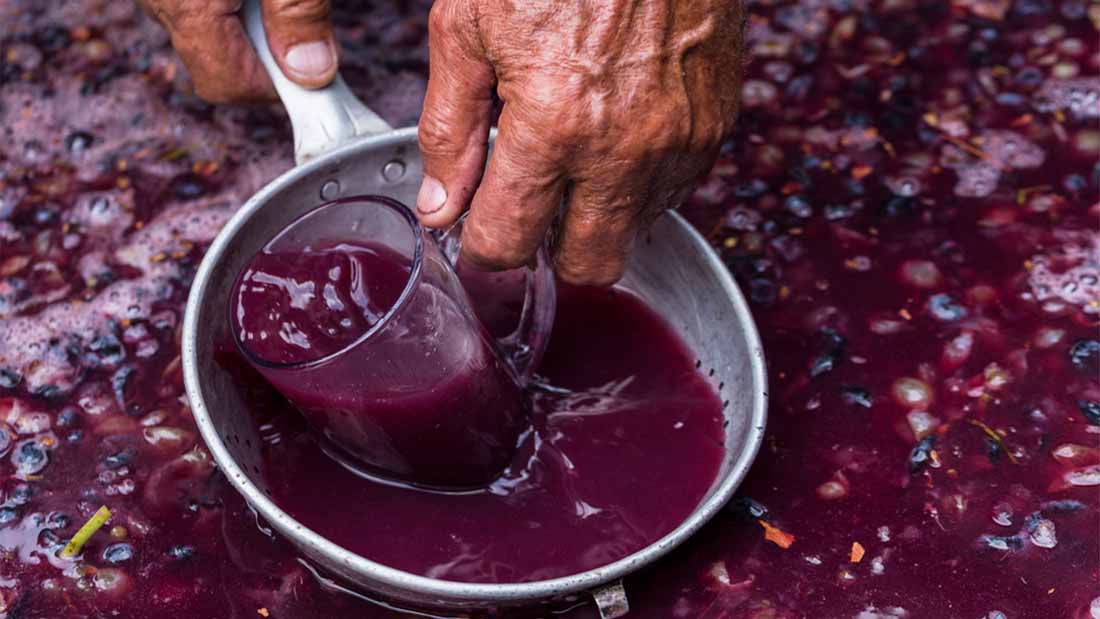
05 Nov What Is The Process Of Cold-Soaking Wines?
Many Pinot Noirs mention the winemaking procedure as “Cold Soak” on the back of the label. If you visit tasting rooms in wineries, you may hear from the tasting room hosts or winemakers that the wine in your glass, for example, was cold-soaked for three days. Many Californian wines and most mid-to-high-end Pinot Noirs will be cold-soaked before fermenting.
This method seldom appears to escape the Pinot cage, but many feel it can be applied to a wide range of other grape varietals and styles. Solid CO2 (Dry Ice) and cooled stainless steel fermenters have made this method much easier to execute.
What Exactly Is Cold Soaking?
Cold soaking, or “pre-fermentation cold maceration,” is a traditional winemaking technique. In this technique, newly harvested grape juice is cooled to 10-15° C. This process takes place before alcoholic fermentation takes place and may take anywhere from just a few hours to ten days, but it is most often three days. Instead of the alcoholic extract (common in prolonged maceration), cold-soaking enables aqueous extraction after fermentation.
As a result, other chemicals are extracted in addition to ones released during an alcoholic extraction, but at different concentrations. Cold-soaking red wines, after the fermentation, transforms the sugar to ethanol and results in alcoholic extraction, but cold-soaking enables the winemaker to regulate the extraction-balancing act.
How Does Cold Soaking Impact Wine?
We now understand what cold soaking is, but what does it do to the wine? What is it about this technique that has so many winemakers interested? The value of cold soaking has been debated, with some people arguing that it is not worth the time and tank space. Cold soaking’s basic premise is that it brings out more colour in the fruit (which Pinot typically lacks) without extracting as much tannin as is possible when some alcohol is present. The “brighter” tastes, such as raspberry or cherry, tend to be more prevalent when the wine has a brighter hue.
Most winemakers, when asked about the cold-soaking process, will tell you something along those lines. On the other hand, some winemakers believe that cold soaking isn’t the best approach for extracting colour since it may be inefficient. This group of winemakers believes that altering the ferocity of punch-downs and pump-overs, as well as the usage of enzymes, are significantly more successful at extracting colour from wine than just letting it sit in the fridge.
Some vintners swear by cold soaking to produce Pinot Noirs with softer tannins and rounded fruit flavours. This may be mainly because the cold soaking method makes pressing off the seeds easier since it removes them from the alcohol before they have a chance to be extracted by strong tannins.
However, there’s still sufficient initial grape skin contact to provide a pretty powerful colour and taste without the harsh tannins that might typically obscure some of these qualities. Additionally, the must “soaks up” during cold soaking, providing the winemaker with a correct sample from which to test for alkalinity, tartaric acid (TA), sugar content, and other factors. If the must isn’t cold-soaked, it might contain “pockets” of higher acidity than the remainder of the juice, for example.
Cold Soaking Improves Wine Complexity
In terms of additions, acting on this metric may not be acceptable for the entire must. Soaking in cold water causes the wine to “melt” together, allowing the winemaker to understand the accurate numbers. Adding cold soaking to the winemaking process might provide producers with a more complex wine with more fruity aromas and flavours. Of course, Pinot Noir has been the focus of virtually all of these discussions since it is the grape variety most usually subjected to this treatment.
Regardless of the types of wines you are storing, you need to ensure the right temperature and other conditions such as humidity, light and more. At Signature Cellars, we are the custom wine cellar designers and installers that can offer you superb spaces to store your precious wines. Feel free to contact us with your specific requirements.
Thanks for reading,
Neil Smallman
Signature Cellars
1300 570 636




No Comments